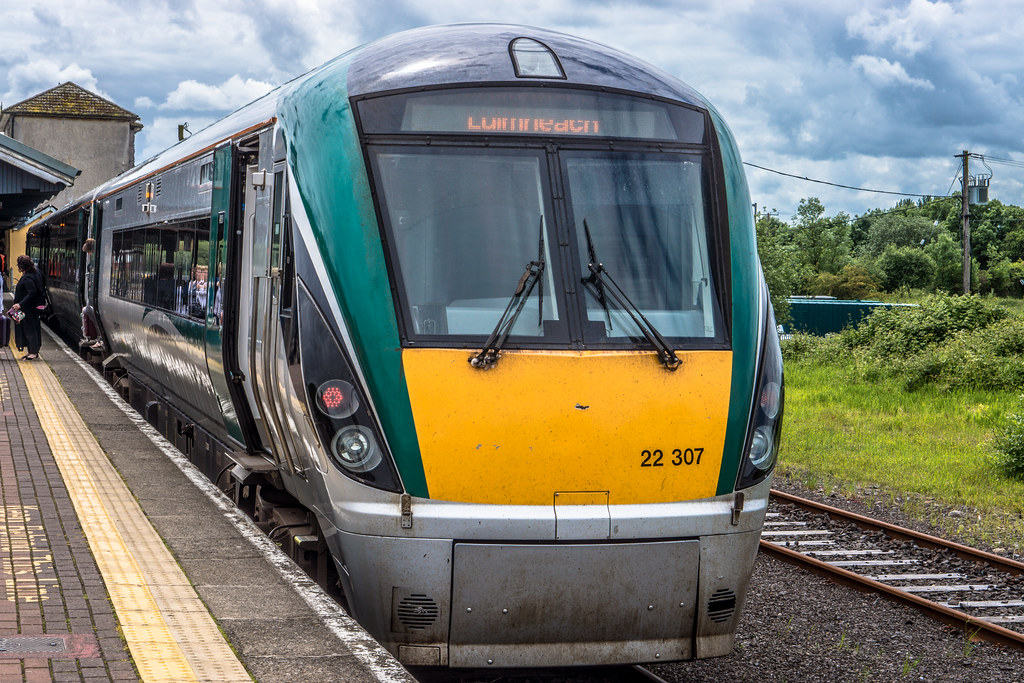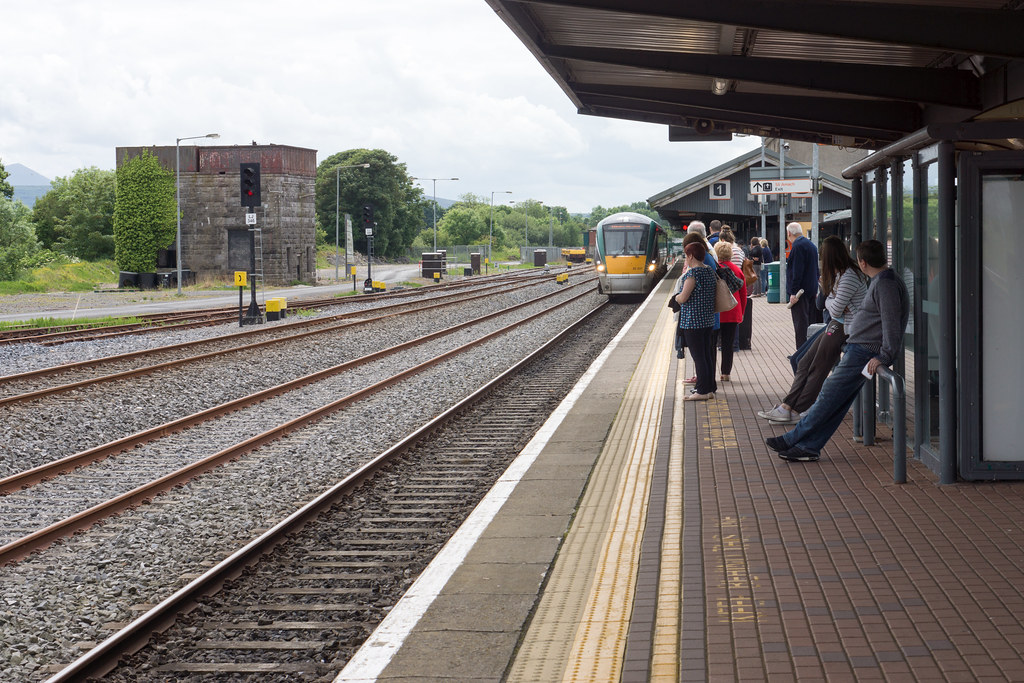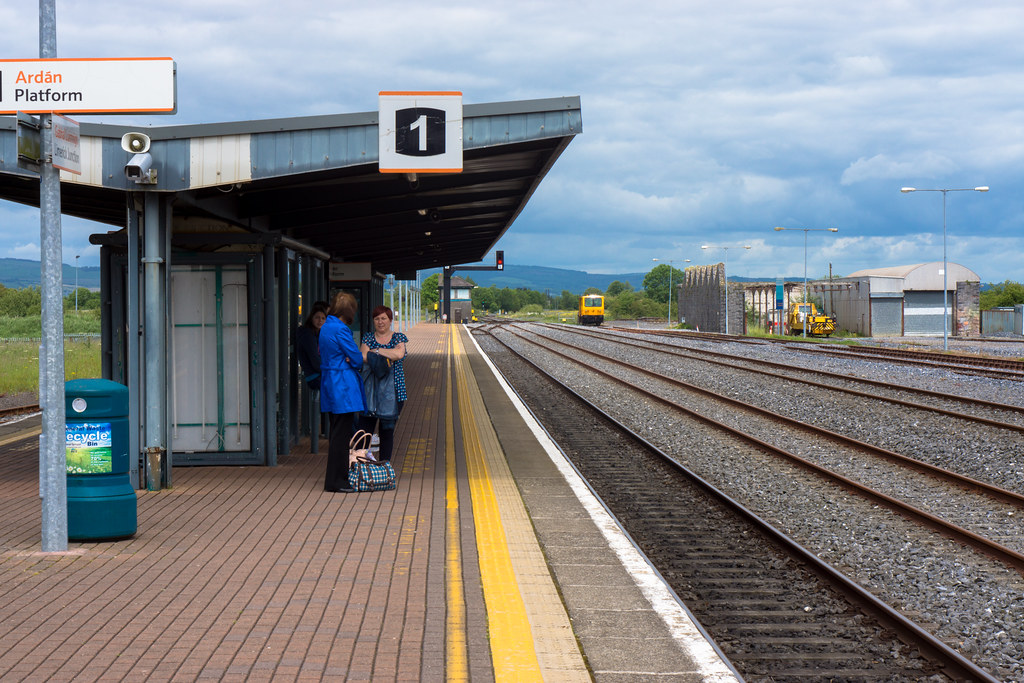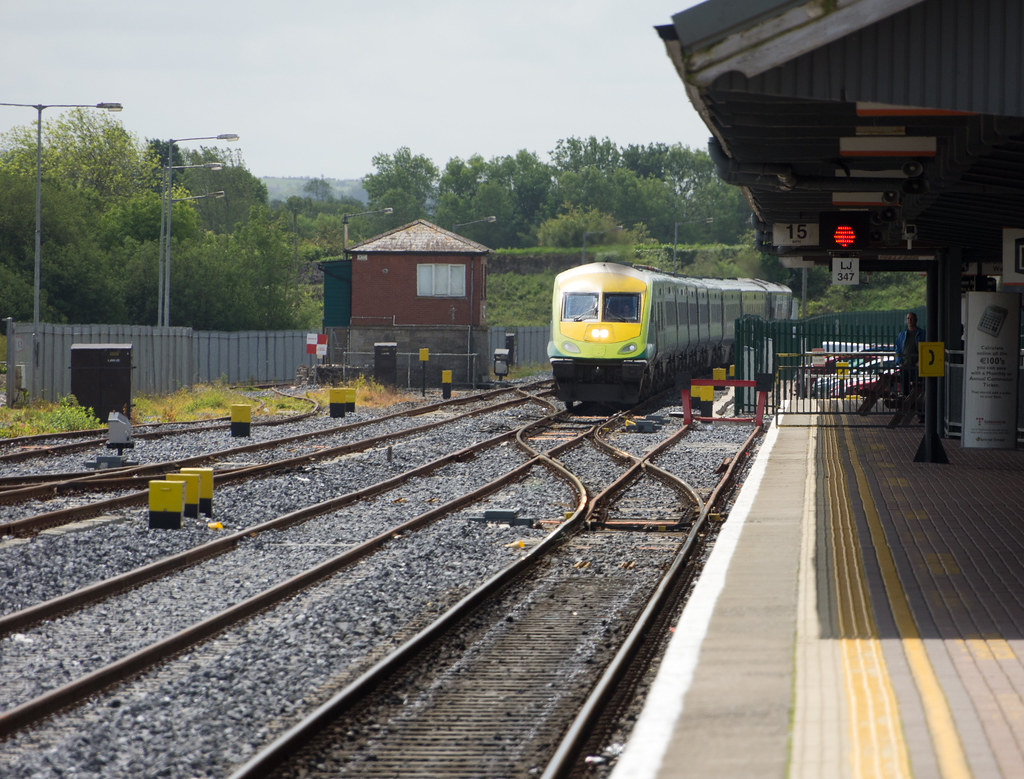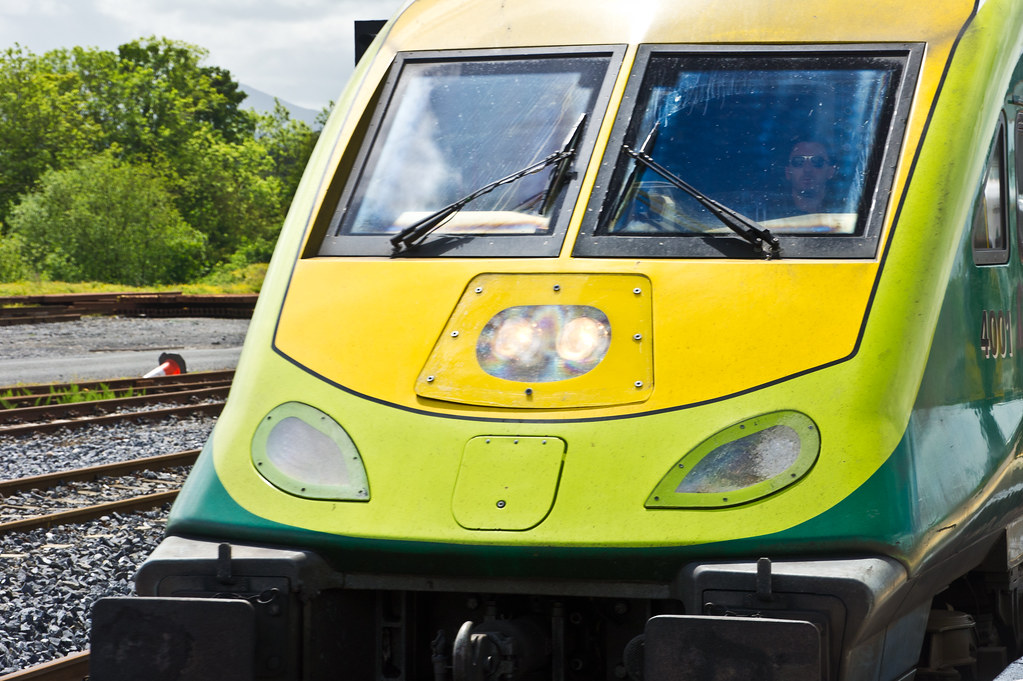
Custom Search
THE GREEN MENU OPTIONS ARE MOBILE FRIENDLY AND ARE FASTER SO THEY ARE RECOMMENDED. THE RED MENU OPTIONS ARE SOMEWHAT SLOWER DEPENDING ON YOUR DEVICE OR BROWSER AND ARE MORE SUITABLE FOR DESKTOPS AND LAPTOPS. THE BLUE OPTIONS ARE PAGE LINKS AND WILL BE PHASED OUT GOING FORWARD
LIMERICK JUNCTION
SORRY FOR THE DELAY
Limerick Junction is the interchange railway station for trains originating in Limerick, Dublin Heuston, Cork, Waterford, Tralee and Ennis stations.
Because of its complex layout it has a special place in railway lore: it is the only remaining railway junction in Ireland where two lines cross at a near-90-degree angle. One route is the Dublin-Cork main line, while the other is the line from Limerick to Waterford. Trains from all four locations are served, some connecting to Ennis in County Clare and Tralee in County Kerry.
The layout consists of four platforms, but only two are in use, both north of the station building. The main line platform, number 1, is a through platform. The terminal platform, to the west of Platform 1, is numbered 2 for part of its length and 3 for the rest, to distinguish between the two trains that may be there in the event of a Waterford train and a Limerick train being present at once. Access to Platforms 2 and 3 for trains from anywhere other than Limerick requires reversing. A train coming from Waterford must cross the Dublin-Cork main line towards Limerick, reversing along the curve used by trains arriving from Limerick. It can then stop at the Limerick bay. The cumbersome procedure of trains to Waterford passing the station before reversing into Platform 4 was ended in 2007 and trains to Waterford as well as trains to Limerick now depart from Platforms 2 and 3. Other places in the Ireland that required some or all trains to reverse include:
Until the 1960s trains on the main Dublin-Cork line, in both directions, also needed to reverse into the platforms if they were calling at the station (as almost all did); the main lines passing one or two tracks away from the platform and the points being arranged that trains in both directions needed to stop on the main line and then reverse over points into the platform. The tracks were rearranged in the mid-1960s to overcome this. What had always perplexed (and made Limerick Junction a centre of attention similar to the interest shown in the Listowel and Ballybunion monorail) is that there was always sufficient space for additional platforms, even to construct a "separate" (but linked) station on the Limerick to Waterford line, and certainly (as events proved) track alteration was feasible; the arrangement therefore seemed eccentric - certainly when main line trains between Cork and Dublin were required to reverse.
In 1967 a short curve was constructed just north of Limerick Junction allowing through main line trains between Limerick and Dublin without reversal at Ballybrophy or single (perhaps double) reversal around Limerick Junction itself. Trains using the direct curve cannot stop at Limerick Junction. The curve is only used by three trains each way per day since the most recent timetable changes in December 2009.
Through running (without reversal) from Limerick to Mallow and Cork is possible.
The station opened on 3 July 1848.
Because of its complex layout it has a special place in railway lore: it is the only remaining railway junction in Ireland where two lines cross at a near-90-degree angle. One route is the Dublin-Cork main line, while the other is the line from Limerick to Waterford. Trains from all four locations are served, some connecting to Ennis in County Clare and Tralee in County Kerry.
The layout consists of four platforms, but only two are in use, both north of the station building. The main line platform, number 1, is a through platform. The terminal platform, to the west of Platform 1, is numbered 2 for part of its length and 3 for the rest, to distinguish between the two trains that may be there in the event of a Waterford train and a Limerick train being present at once. Access to Platforms 2 and 3 for trains from anywhere other than Limerick requires reversing. A train coming from Waterford must cross the Dublin-Cork main line towards Limerick, reversing along the curve used by trains arriving from Limerick. It can then stop at the Limerick bay. The cumbersome procedure of trains to Waterford passing the station before reversing into Platform 4 was ended in 2007 and trains to Waterford as well as trains to Limerick now depart from Platforms 2 and 3. Other places in the Ireland that required some or all trains to reverse include:
- Kilkenny
- Killarney
- Athenry re-opened line from December 2009. Trains from Limerick to Galway reverse at Athenry
Until the 1960s trains on the main Dublin-Cork line, in both directions, also needed to reverse into the platforms if they were calling at the station (as almost all did); the main lines passing one or two tracks away from the platform and the points being arranged that trains in both directions needed to stop on the main line and then reverse over points into the platform. The tracks were rearranged in the mid-1960s to overcome this. What had always perplexed (and made Limerick Junction a centre of attention similar to the interest shown in the Listowel and Ballybunion monorail) is that there was always sufficient space for additional platforms, even to construct a "separate" (but linked) station on the Limerick to Waterford line, and certainly (as events proved) track alteration was feasible; the arrangement therefore seemed eccentric - certainly when main line trains between Cork and Dublin were required to reverse.
In 1967 a short curve was constructed just north of Limerick Junction allowing through main line trains between Limerick and Dublin without reversal at Ballybrophy or single (perhaps double) reversal around Limerick Junction itself. Trains using the direct curve cannot stop at Limerick Junction. The curve is only used by three trains each way per day since the most recent timetable changes in December 2009.
Through running (without reversal) from Limerick to Mallow and Cork is possible.
The station opened on 3 July 1848.
Commercial DisclosurePLEASE NOTE THAT LINKS BELOW MAY REDIRECT YOU TO THE AMAZON LOCATION MOST LIKELY TO SHIP TO YOUR ADDRESS
You will find links to buy products from Amazon, Google and other partners. If you click on these links, you’ll find that the URL includes a small extra piece of text which identifies that the click came from my websites. This text is an affiliate code, and it means that I get a small percentage of the money you spend if you choose to buy that product, or, in some cases, other products from the site soon after. These affiliate links help pay the costs of producing my websites and ensure that the content is free to you.

